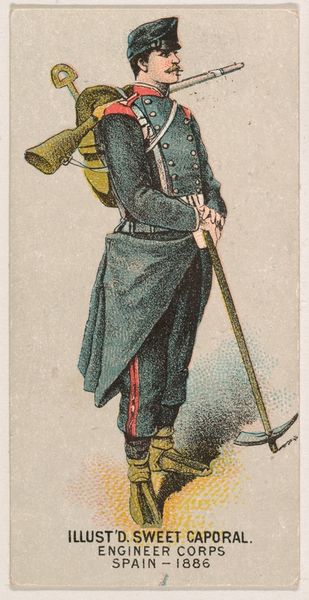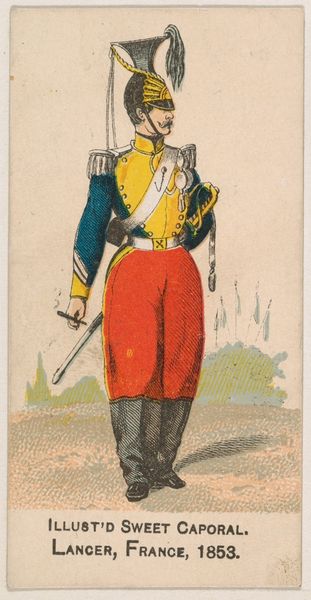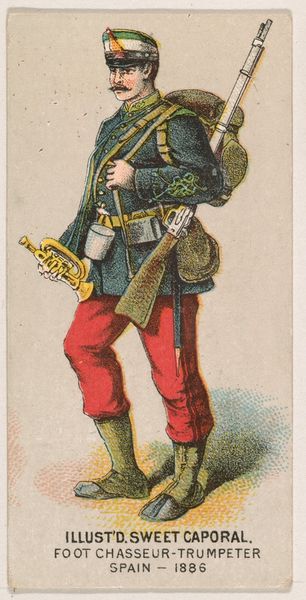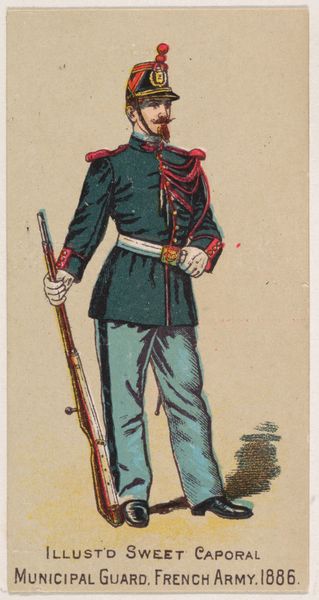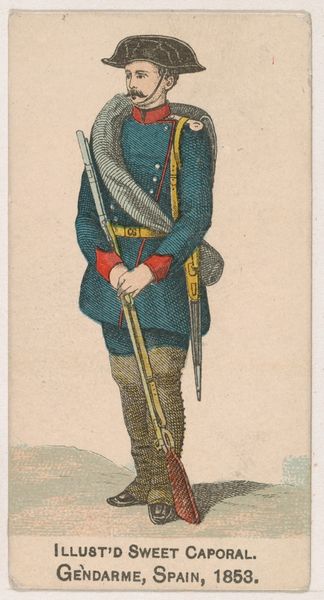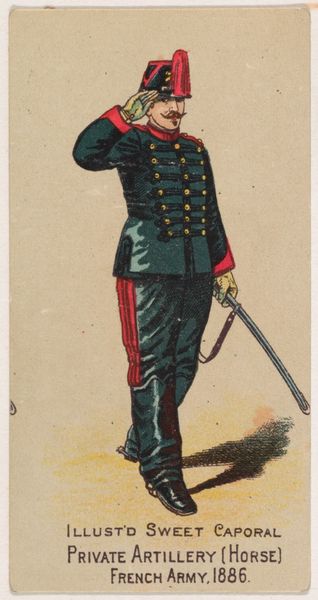
Chasseur, France, 1853, from the Military Series (N224) issued by Kinney Tobacco Company to promote Sweet Caporal Cigarettes 1888
0:00
0:00
drawing, print
#
portrait
#
drawing
# print
#
men
#
genre-painting
Dimensions: Sheet: 2 3/4 × 1 1/2 in. (7 × 3.8 cm)
Copyright: Public Domain
This small chromolithograph, a French soldier made by the Kinney Tobacco Company in 1888, might seem a world away from what we think of as art. But it is worth dwelling on for a moment. Consider the processes involved: photography to capture the image; graphic design to flatten it and sharpen the lines; industrial printing to produce thousands of copies; and marketing to get them into circulation. Each card was a tiny advertisement, a carefully constructed fantasy meant to induce consumers to purchase Sweet Caporal cigarettes. The material itself, thin card stock, speaks to the disposability of consumer culture. Unlike a painting intended to last for centuries, this was designed for momentary appeal, a fleeting image in a rapidly changing world. By focusing on the making and circulation of this humble object, we can gain insight into the culture of mass production and consumption that was emerging in the late 19th century. This helps us challenge the traditional boundaries between art and commerce.
Comments
No comments
Be the first to comment and join the conversation on the ultimate creative platform.




